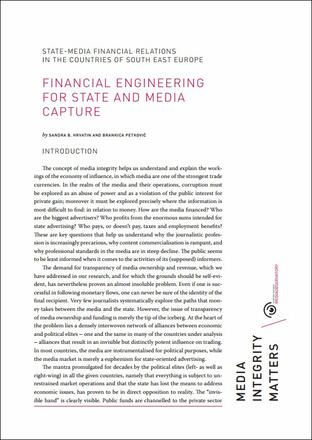
State-media financial relations in South East Europe
Based on seven country reports released in 2015, SEE Media Observatory elaborates a regional overview of state-media financial relations and their impact on media freedom and independence. The report traces a regional overview of the flow of public money towards media, noticing as the most significant risk factor the media’s increasing dependence on state funds.
The first element pointed out in the report is the opacity of media ownership structures. “Over the years, owners have developed a range of incredibly creative methods to conceal both ownership connections and their ties to ruling political parties”, and the process of privatization did not positively impact on this.
In the small media markets of the region, the revenue generated by state advertising makes the difference between survival and bankruptcy and are therefore crucial in determining editorial policies. In Bosnia and Herzegovina, Macedonia and Serbia, for example, the state is the most powerful financial player in the media market, especially since the onset of the economic crisis.
The state supports media directly or indirectly in most countries and in many different forms: through the funding of public media; through lower tax rates; through special tax deductions; by advertising public authorities in the media; through direct assistance for individual media industries; through the financing of particular content (co-funding for programming); by granting minorities communication rights; or by subsidizing local radio and television outlets.
The regional overview is based on the SEE Media Observatory research reports on media finances and state-media financial relations in seven countries of South East Europe. The reports are available at http://mediaobservatory.net/media-integrity-reports-2015
Tags: Media funding Media ownership Access to information Albania Bosnia Herzegovina Kosovo North Macedonia Montenegro Serbia TurkeyThe content of this article can be used according to the terms of Creative Commons: Attribution-NonCommercial 4.0 International (CC BY-NC 4.0) . To do so use the the wording "this article was originally published on the Resource Centre on Media Freedom in Europe" including a direct active link to the original article page.

